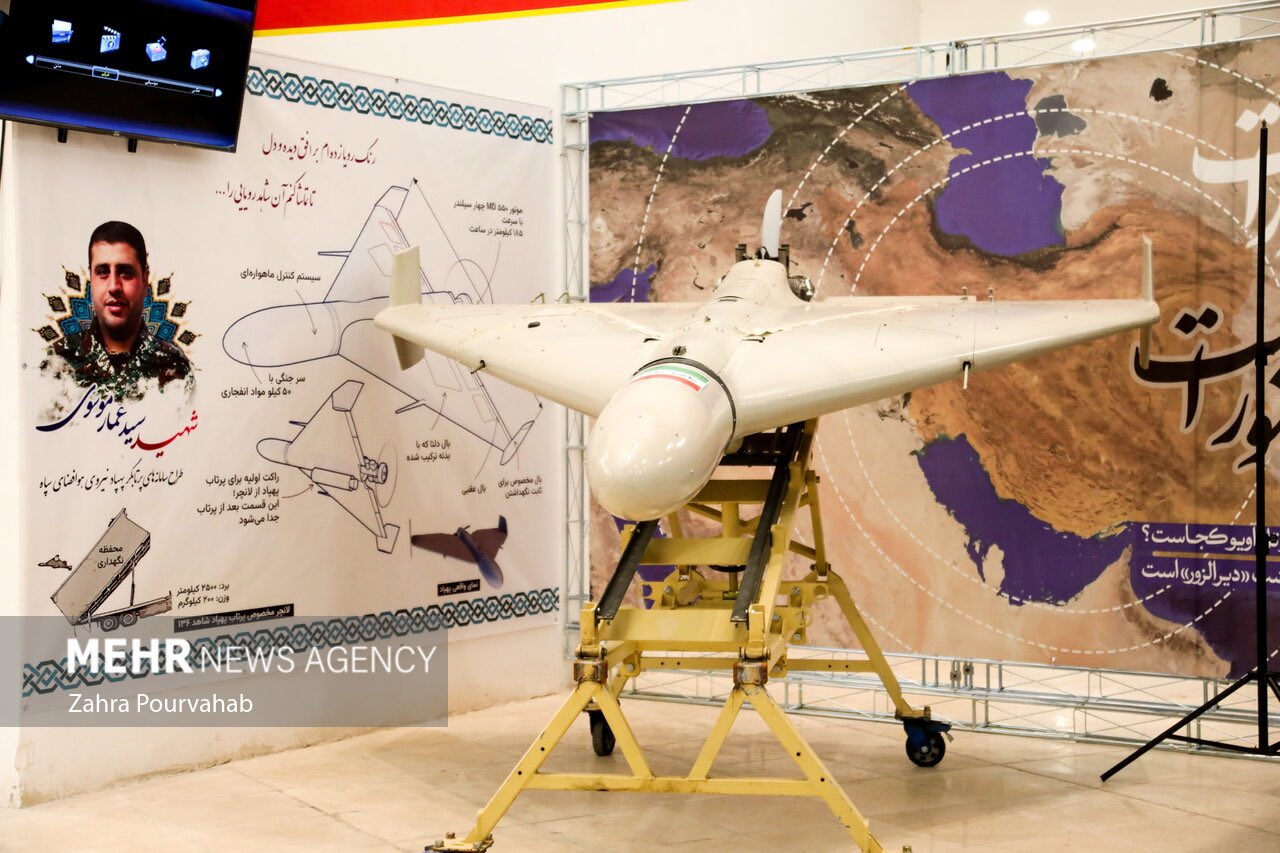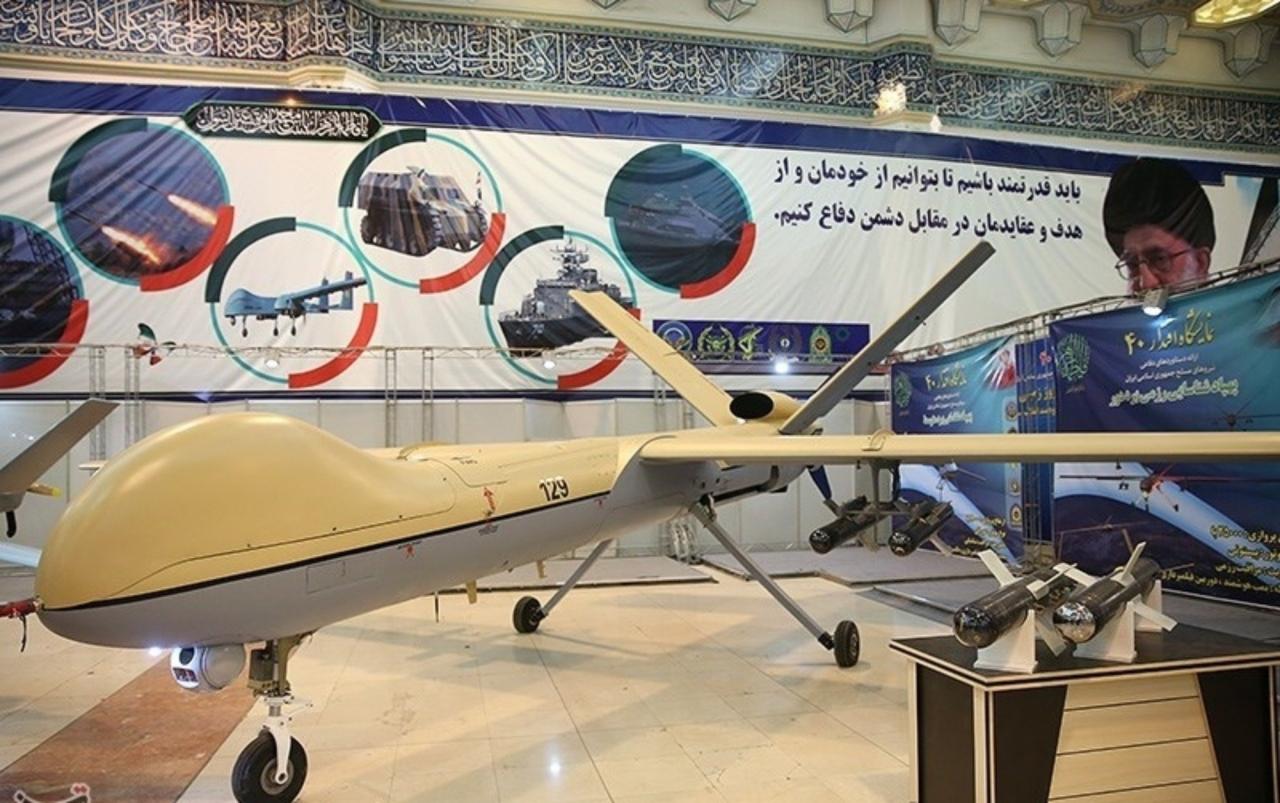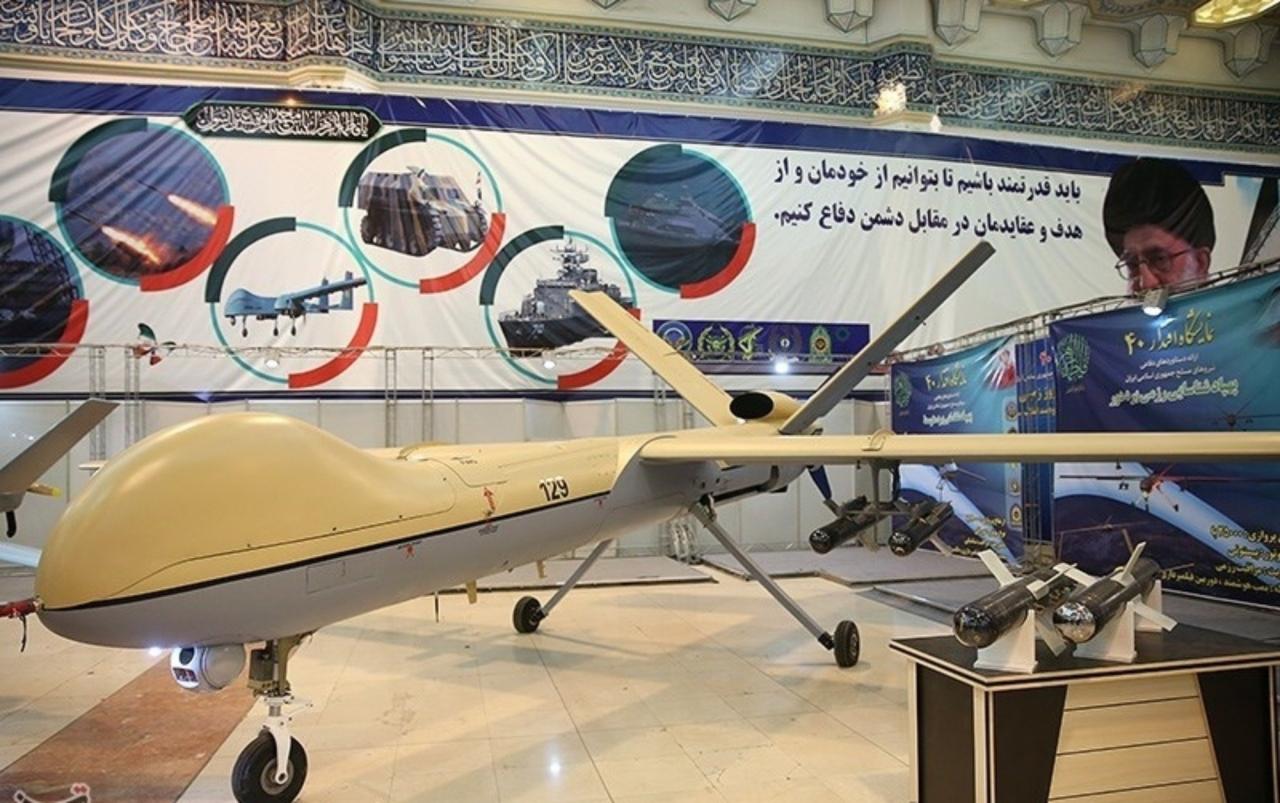Shahed drones, inexpensive and readily available, have significantly altered the landscape of modern warfare. Their proliferation has sparked global concern, impacting military strategies and geopolitical dynamics. This analysis delves into the technical specifications, operational capabilities, manufacturing processes, countermeasures, and geopolitical implications of these unmanned aerial vehicles (UAVs), providing a comprehensive understanding of their impact on the current international security environment.
From their relatively simple design to their devastating potential, Shahed drones represent a paradigm shift in asymmetric warfare. This examination will explore both their strengths and weaknesses, analyzing successful and unsuccessful deployments to understand their effectiveness and the challenges posed by their use. We will also consider the ethical and strategic implications of their widespread availability and the arms race they’ve inadvertently spurred.
Shahed Drone: A Comprehensive Overview

The Shahed drone, a relatively low-cost, expendable unmanned aerial vehicle (UAV), has significantly impacted modern warfare and geopolitical dynamics. Its widespread use, particularly in the ongoing conflict in Ukraine, has highlighted both its capabilities and vulnerabilities. This overview delves into the technical specifications, operational capabilities, manufacturing, countermeasures, and broader implications of this impactful drone technology.
Shahed Drone Technical Specifications

The Shahed drone, also known by various designations depending on the source and specific variant, possesses a relatively simple yet effective design. Its construction relies on readily available components, contributing to its affordability and ease of mass production.
Precise dimensions vary slightly depending on the specific model, but generally, the Shahed drone is characterized by its relatively small size and lightweight construction. Materials commonly used include lightweight composites and possibly some metal components for structural reinforcement. The propulsion system typically consists of a small, relatively low-power internal combustion engine, likely fueled by gasoline or a similar readily available fuel source.
This contributes to its limited range, but also its simplicity and ease of maintenance.
Payload capacity is limited, typically carrying a small warhead, though some variants may be equipped for reconnaissance or other tasks. The type of payload varies, but explosive warheads are most commonly reported.
The Shahed drone, a relatively inexpensive but effective weapon, has garnered significant attention for its use in various conflicts. News of a drone being shot down in New Jersey, as reported in this article drone shot down in nj , raises questions about potential misuse of similar technology within US airspace. The incident highlights the ongoing concerns surrounding the proliferation and potential for unauthorized use of Shahed-like drones.
| Specification | Shahed-136 (estimated) | Other UAV (Example: Bayraktar TB2) | Other UAV (Example: Switchblade 300) |
|---|---|---|---|
| Wingspan | ~2.5m | ~12m | ~0.6m |
| Length | ~3.5m | ~6.5m | ~0.6m |
| Weight | ~200kg | ~650kg | ~2.5kg |
| Payload | ~40kg | ~150kg | ~3kg |
| Range | ~1000-2500km (depending on variant and wind conditions) | ~150km | ~10km |
| Endurance | ~10-16 hours (depending on variant and wind conditions) | ~27 hours | ~15 minutes |
| Propulsion | Internal Combustion Engine | Turboprop | Electric Motor |
Shahed Drone Operational Capabilities
The Shahed drone’s operational characteristics are largely defined by its relatively simple design and limited capabilities. Its flight characteristics, including speed, altitude, and endurance, are constrained by its propulsion system and overall design. Navigation and guidance systems are likely less sophisticated than those found in more advanced UAVs, relying on pre-programmed flight paths or potentially GPS-aided inertial navigation.
Communication systems are a crucial element, and their vulnerability to countermeasures represents a significant weakness. The drone’s communication links are susceptible to jamming and disruption. Successful deployments have often been characterized by overwhelming numbers, exploiting the limitations of air defenses, while failures frequently stem from successful countermeasures or mechanical malfunctions.
Examples of successful deployments include attacks on Ukrainian infrastructure, while failures have been reported due to effective air defense systems and countermeasures. The effectiveness of the Shahed drone is heavily dependent on the adversary’s air defense capabilities and the tactical context of its deployment.
Shahed Drone Manufacturing and Acquisition
The manufacturing process of the Shahed drone is believed to involve a relatively straightforward assembly process using readily available components. The supply chain likely draws upon both domestic and international sources for components, creating potential vulnerabilities if key suppliers are disrupted. The cost of manufacturing a single Shahed drone is estimated to be relatively low, making it a cost-effective weapon for asymmetric warfare, despite its limitations.
- Iran
- Russia
- Other countries are suspected of acquiring or utilizing Shahed drones, but concrete evidence is often limited for reasons of national security.
Shahed Drone Countermeasures and Defenses

Various countermeasures have proven effective against Shahed drones. Electronic warfare techniques, such as jamming, can disrupt their navigation and communication systems. Anti-aircraft artillery and missile systems can be effective, particularly against slower-moving drones. The relative strengths and weaknesses of different counter-drone technologies vary depending on factors such as the specific drone variant, the environment, and the capabilities of the defender.
Strategies employed by different countries include layered defense systems combining early warning radar, electronic warfare, and kinetic weapons. A potential layered defense system might include long-range radar for early detection, followed by electronic jamming to disrupt communications and navigation, and finally, the deployment of anti-aircraft artillery or missile systems to intercept incoming drones.
Imagine a layered defense: A network of early warning radars providing long-range detection of incoming drone swarms. This triggers electronic warfare systems to jam communications and potentially disrupt navigation. Closer to the target, shorter-range radar systems provide more precise targeting information for anti-aircraft artillery or missile systems to engage the drones. Finally, a close-in defense system, potentially using directed energy weapons, could target any drones that manage to penetrate the outer layers.
Shahed Drone’s Impact on Military Strategy and Geopolitics
The Shahed drone has significantly impacted asymmetric warfare, making it a relatively inexpensive and readily available option for adversaries facing superior conventional forces. Its proliferation has geopolitical consequences, altering the balance of power in several regional conflicts and raising concerns about the potential for wider dissemination of this technology. The Shahed drone’s impact is comparable to that of other disruptive technologies, such as precision-guided munitions, in shifting military doctrines and operational strategies.
The Shahed drone’s relatively low cost and ease of production have allowed actors with limited resources to inflict significant damage on more technologically advanced opponents, demonstrating its potential to alter the balance of power in regional conflicts. Its use in Ukraine, for example, has significantly changed the dynamics of the war, forcing a reassessment of air defense strategies and highlighting the limitations of traditional military doctrines in the face of such asymmetric threats.
The Shahed drone’s impact extends far beyond the immediate battlefield. Its relatively low cost and ease of use have democratized aerial warfare, empowering non-state actors and altering the balance of power in various regions. Understanding its capabilities, vulnerabilities, and geopolitical implications is crucial for developing effective countermeasures and mitigating future conflicts. Further research into advanced counter-drone technologies and international cooperation on arms control are essential steps in navigating this new era of warfare.
Key Questions Answered: Shahed Drone
What is the lifespan of a Shahed drone?
The operational lifespan varies depending on usage and maintenance, but it’s generally considered to be relatively short, requiring frequent replacements.
How accurate are Shahed drones?
The Shahed drone, known for its low-cost and readily available nature, presents a significant challenge. Understanding its capabilities requires examining various payload options, and a comparison with commercially available systems such as those detailed in the remington drone loads specifications proves insightful. This contrast highlights the technological differences and logistical implications between these differing drone platforms, offering a broader understanding of the Shahed drone’s role in modern conflict.
Their accuracy is debated; while relatively inexpensive, their precision guidance systems are less sophisticated than those of more advanced drones, leading to varying degrees of accuracy in targeting.
What are the main components of a Shahed drone?
Key components include the airframe, propulsion system (engine and fuel), guidance system, payload mechanism, and communication systems. Many components are commercially available, contributing to ease of production.
Are Shahed drones easily repairable?
The relative simplicity of their design makes some repairs possible, but significant damage often renders them beyond economical repair.
